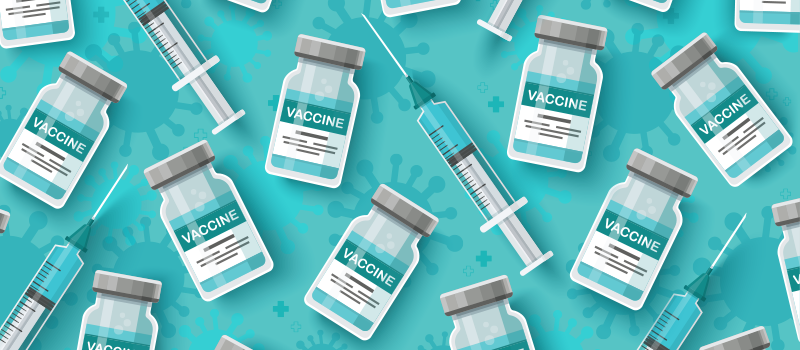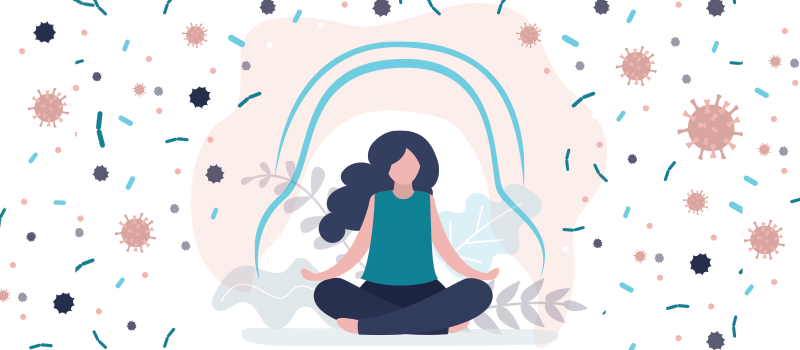What’s the Buzz
The Bee Healthy Blog
Cat Vaccinations: What to Know

Vaccines are vital for the overall health and longevity of your cat. Unvaccinated cats are at risk of being infected with feline viruses and bacteria that can cause dangerous, even fatal, illnesses. Veterinarians recommend certain core vaccines for all cats as part of preventive medicine. They may also recommend certain non-core vaccines as part of the vaccination program in some cats based on lifestyle, environment, and health status.
Please continue reading to learn more about the appropriate vaccination schedule for your cat. Pet parents should always get a professional opinion from the veterinarian for the most appropriate vaccines for their cat and call the veterinarian immediately at the first signs and symptoms of an infection.
What are the types of vaccines for cats?
Modified live vaccines
These vaccines contain a weakened or genetically modified form of live organisms. They do not produce disease but trigger an immune response in the cat's body to help build immunity. Live vaccines provide stronger, longer-lasting immunity than inactivated vaccines. However, modified live vaccines are not recommended for pregnant cats or cats with weakened immune systems, such as those with feline immunodeficiency virus (FIV).
Inactivated vaccines
These vaccines are made from dead or genetically modified organisms. They include an adjuvant (additional ingredient) to boost immunity.
Subunit vaccines
Also called recombinant-DNA vaccines, these vaccines contain infectious organisms that have been broken down, and only certain parts are included in the vaccine.
What vaccination do cats need?
The American Association for Feline Practitioners recommends the following core vaccines for kittens and adult cats:
Feline panleukopenia virus
Also called feline distemper, feline panleukopenia is a highly contagious and often fatal viral gastroenteritis in cats. The majority of infections do not cause symptoms. When present, symptoms include high fever, profound depression, loss of appetite, dehydration, and collapse. The vaccine provides long-lasting protection. Widespread vaccination has made this disease uncommon today.
Feline viral rhinotracheitis
These are upper respiratory infections that are sometimes called cat flu. They are caused by the feline herpes virus type 1 (FHV-1). This virus affects domestic and wild cats of all ages. Signs and symptoms include conjunctivitis, sneezing, nasal congestion, excessive blinking, and discharge from the eyes and nose that may be watery and clear or thick and yellow/green in color. The vaccine helps to reduce the severity and duration of the illness. The immunity provided by the vaccine is not long-lasting, and therefore, cats need booster vaccines on a regular basis.
Feline calicivirus
This is a highly contagious upper respiratory infection in cats that causes symptoms such as nasal congestion, sneezing, conjunctivitis, and discharge from the eyes and nose. Cats with a calicivirus infection can also develop ulcers on the lips, gums, tongue, hard palate, and nose. Some strains of the calicivirus can cause painful joints and lameness, especially in kittens. Cats can be exposed to calicivirus in a boarding kennel or at animal societies, cat shows, etc. The vaccine against calicivirus is a core vaccine. It helps to reduce the severity and duration of the illness. The kitten vaccination schedule includes boosters of this vaccine between 8 and 20 weeks of age, another booster a year after the initial vaccine, and then regular boosters every 3 years in an adult cat.
Rabies vaccine
This is a viral zoonotic disease that is almost always fatal once neurological symptoms develop. A bite from an infected animal can spread the rabies infection to humans and other animals. Rabies vaccination is an essential part of the cat vaccination schedule and is required by law in most places.
Feline leukemia virus
This virus is common in outdoor felines, catteries, and kittens. Persistent infections can cause tumors, damage to the immune system, and death. The incubation period (time between exposure to the virus and the appearance of symptoms) is long, and many infected cats appear healthy. For this reason, veterinarians check for FeLV infection with a blood test before giving a FeLV vaccine. The feline leukemia vaccine is a core vaccine for kittens. It provides a good level of protection but is not foolproof.
Non-core vaccinations that are recommended for certain cats that are at risk include:
Chlamydophila felis
Chlamydiosis is a bacterial infection caused by an organism called Chlamydophila felis. Symptoms include painful inflammation and swelling of the membranes in the eye, upper respiratory infections, and infertility. This infection is common in places where many cats live together, such as multi-cat households, catteries, breeding homes, and animal shelters. The infection can last for a long time in colonies of cats because immunity against reinfection is short-lived. Feline vaccination helps to prevent the infection from becoming established in colonies.
Bordetella bronchiseptica
Also called kennel cough, this is an upper respiratory infectious disease in cats that tends to occur in multi-cat households, breeding households, catteries, and shelters. Symptoms include sneezing, coughing, fever, and discharge from the eyes and nose. The cat vaccine for Bordetella is an intranasal vaccine that is given via drops placed in the nose. It is not a primary vaccination but may be given based on the cat’s lifestyle and environment.
Feline immunodeficiency virus
This is a virus that attacks the immune system, leaving the cat vulnerable to dangerous opportunistic infections. Infected cats can appear healthy for years before entering a progressive immunocompromised state in which they develop secondary infections. The virus can spread to other cats through bites and scratches. The infection is commonly diagnosed in outdoor cats, especially adult male stray cats, who are more likely to fight for food and territory. Once infected, affected cats remain FIV-positive for life.
An FIV vaccine was available in the US up to 2017 and was a non-core vaccine given to high-risk cats. However, it is no longer available because it offers only limited protection. Also, it was an inactivated vaccine that contained an adjuvant, which raised concerns about vaccine site sarcoma (a tumor at the vaccine injection site). Additionally, the vaccine led to false-positive results for FIV for several years after vaccination. At present, the only way to protect against FIV is to prevent disease exposure.
Other vaccines that may be appropriate in only cats with certain risk factors include:
Feline infectious peritonitis
This infection is caused by a ubiquitous virus called coronavirus. These infections are common, but symptoms of feline infectious peritonitis are less common. Most cats develop a minor illness, but some can develop a serious and potentially fatal infection. There is one vaccine against FIP which has questionable effectiveness and is not routinely recommended.
What vaccines do indoor cats need?
All cats, including an indoor cat, should receive the core vaccines (see above) to protect them against common but serious feline infections.
How often do adult cats need shots?
Maternal antibodies protect newborn kittens from diseases. This immunity only lasts for a few weeks. A new kitten should start getting vaccinations at 6-8 weeks of age. The shots are given in a series every 3-4 weeks. The kitten vaccinations continue until the age of 16 weeks. This is followed by booster vaccines a year later. Adult cats need a booster vaccine every year or every 3 years, depending on the type of vaccine.
What is the 5 in 1 vaccine for cats?
Many cat vaccines come in the form of a combination vaccine that is easy to administer and protects against multiple diseases.
The FVRCP vaccine is a core vaccine that protects against feline viral rhinotracheitis, calicivirus, and panleukopenia.
A 5-in-1 vaccine for cats is sold under the brand name Fevac F5. It is an inactivated vaccine that protects against feline parvovirus (FPV), feline herpesvirus (FHP), feline calicivirus (FCV), Chlamydophila felis (C. felis), and the feline leukemia virus (FeLV). The 4-in-1 vaccine (Fevac F4) protects against FPV, FHP, FCV, and C. felis. The 3-in-1 vaccine (Felineguard 3) protects against FPV, FHP, and FCV.
Your veterinarian can recommend the appropriate vaccinations based on your cat’s vaccine history.
References:
-
https://www.msdvetmanual.com/generalized-conditions/feline-panleukopenia/feline-panleukopenia#:
-
https://vcahospitals.com/know-your-pet/feline-herpesvirus-infection-or-feline-viral-rhinotracheitis
-
https://vcahospitals.com/know-your-pet/feline-calicivirus-infection
-
https://icatcare.org/advice/chlamydophila-felis-infection-feline-chlamydophilosis/
-
https://icatcare.org/advice/bordetella-bronchiseptica-infection-in-cats/
-
https://www.petmd.com/cat/care/what-fiv-and-why-fiv-vaccine-no-longer-available
-
https://www.zoetis.com.au/all-products/portal-site/fevac-range.aspx












SOCIAL